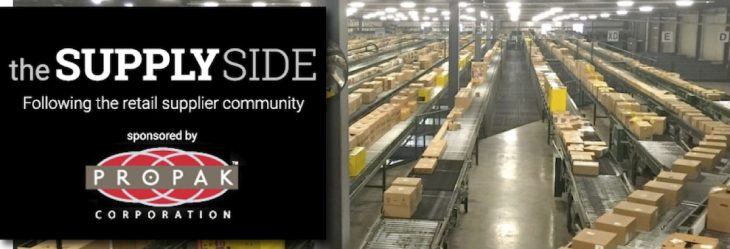The Supply Side: Suppliers, retailers react as categories gravitate online
by February 8, 2017 2:45 pm 725 views

One of the biggest concerns of suppliers and retailers like Wal-Mart Stores is not if, but when will a majority of category sales make the shift from in-store to online. In 2016, Amazon became the world’s largest apparel retailer and Zappos, owned by Amazon, is one of the fastest-growing shoe retailers in the world with its online-only business platform.
Annibal Sodero, assistant professor at the University of Arkansas in Fayetteville, said every category is being impacted in some way, including growing online sales, often at the expense of in-store sales. He said the days of people being afraid to purchase items online are in the past. Pointing to himself, Sodero said everything he was wearing during a recent interview was purchased online, including his watch.
“So many companies are coming up with technology that reaches out to consumers to allow them to seemingly try on clothes and shoes online with augmented realities and sizing apps which makes consumers more apt to shop for clothes online,” Sodero said.
DISRUPTING TRADITIONAL RETAIL
Last year, Amazon posted U.S. apparel sales of $16.3 billion, second to only Wal-Mart. Amazon increased the number of apparel and accessory products on its website by 87% last year from the year before, and that’s more than the combined online sales of five large online clothing competitors — Macy’s, Nordstrom, Kohl’s, Gap, and Victoria’s Secret parent company L Brands Inc.
Consumers can look at the early holiday sales results and see that more online shopping was done in late 2016 than any other year. Everyone from Macy’s to Home Depot have said online sales were stronger than expected, while in-store sales and traffic underperformed.
Sodero said it’s not just apparel, shoes and accessories quickly gravitating to online sales. Consumers are perfectly happy, he explained, to also buy washing machines and power drills online. He said Chinese e-tailer NewEgg is also making a splash in electronic sales, another example of how a startup is disrupting traditional retail.

“There will be more of that disruption in the near future as more once-prominent retail brands fade into history.”
$880 BILLION MIGRATION
A recent report from the World Economic Forum said retailers can expect to see $880 billion of commerce move from brick-and-mortar to online during the next decade.
Keith Anderson, vice president of strategy and insights at Profitero, said in the past there may have been some categories that were seen as insulated from the threat of online disruption, but that just isn’t the case today. Looking back to early years of e-commerce, Anderson said the price-to-weight ratio greatly dictated what was sellable online. For instance, he said a diamond ring is expensive and lightweight. He said items were also shipped in ones and twos, entirely different from the traditional full-truck load logistics that dominated traditional retail for 30 years.
He said diamonds and shoes also have a sensory component to them and once companies like Blue Diamond and Zappos figured out how to deliver on the sensory and convenience propositions, those categories quickly moved online. He said there are about 10 considerations to help retailers know if a product is conducive to online sales, some as simple as temperature sensitivity, such as dairy or meat.
Anderson said virtually everything is sellable online today, particularly now that retailers like Wal-Mart, Best Buy and Home Depot are offering in-store pickup and shipping from the store. Before these delivery channels were available a few years ago, some things weren’t sold online.
Anderson said U.S. consumers have also become more willing to let someone else pick their cantaloupes for their grocery order, when just a few years ago that wasn’t the case. He said improved bandwidth and higher resolution photos and the iPhone have also greatly helped to push more sales online. The iPhone will be 10 years old in June, and the iPad will turn 7 in April.
Suppliers can no longer depend on the linear growth patterns of the past four decades related to new store openings by retailers like Wal-Mart, Anderson said. Retailers are opening fewer stores, and more brick-and-mortar sites continue to close each year. Anderson said e-commerce is about high frequency. He said if retailers like Walmart can make the high frequency online orders easy like groceries, then it’s reasonable to assume they can also sell more general merchandise online to the same customer.
“Think about how Wal-Mart moved from its discount stores to the Supercenter because it knew groceries were a trip driver,” Anderson said. “Now Walmart is looking at that same plan online with its grocery program which utilizes stores as the pickup center.”
READY FOR THE MOVE
Anderson credits Home Depot with making great strides in e-commerce because it had to do so. When Amazon became the search engine for a majority of consumers last year, Home Depot saw an opportunity to jump in. Anderson said people might start their search for washing machines online at Amazon, read reviews and scope out products, but they might then check Home Depot for the same model. And that retailer was ready with an online presence and a pickup-in-store or delivery option.
When asked how suppliers might get themselves ready for more categories to move online, Anderson said the worst thing they can do is ignore the situation. He said the time for CPG companies to have an online strategy was yesterday and there is no time to waste going forward.
Sodero agreed that a vast majority of CPG suppliers were not ready with an online strategy. Anderson said it’s imperative that suppliers define what success means for them. It could mean a certain market share in a category, perhaps the No. 1 share of washing machine sales in stores. Then they need to also define what success will look like with their online business.
“It could be the No. 5 market share in stores has a goal to be the No. 2 player online, and this is a threat to the business of No. 1. The No. 5 player might be willing to ride along as the category grows online and accept a lower profit margin while it also has to invest in the immature channel,” Anderson explained.
He adds that in some categories there will be suppliers who choose to support fewer retailers over time as more of their sales move online. Anderson and Sodero don’t think anyone can predict when a category will flip over to online dominance, but it’s evident that more are doing so all the time.
“Roughly $1 out of every $10 is spent online for retail, and at some point that will double and double again. E-commerce is only 20 years old. In each of the past five years online sales have grown by double digits, while in-store sales struggle to grow from 2% to 3% annually. The law of big numbers still favors traditional retail, but there is no let down in strong annual growth from online sales. And someday there will be a saturation point, but we are nowhere near it yet,” Anderson said.
Sodero said in the meantime categories from razors, to dog food and groceries are being disrupted from startups like Dollar Shave, Wag.com and Blue Apron, which didn’t exist five years ago. He said these online startups chip away at the market share of retailers like Wal-Mart and their suppliers.
Editor’s note: The Supply Side section of Talk Business & Politics focuses on the companies, organizations, issues and individuals engaged in providing products and services to retailers. The Supply Side is managed by Talk Business & Politics and sponsored by Propak Logistics.
